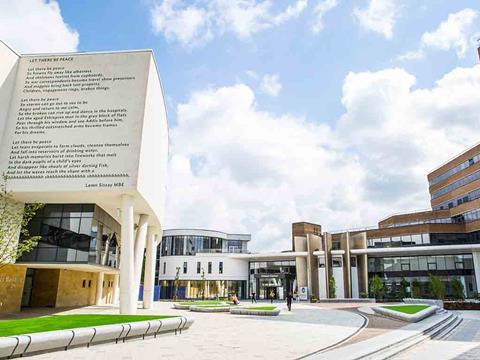
University of Huddersfield aims to increase awareness of its benefits through its annual health and wellbeing benefit fairs.
The organisation, which has 1,700 employees, typically has a mix of both internal and external partners that participate in its wellbeing benefit fairs.
Internally, it invites representatives from its on-site gym facilities and its library services, as well as its teams for diversity, equity and inclusion (DEI), wellbeing, organisational development, and sustainability. Its occupational health department is also invited.
Externally, it invites its providers for free will writing and payroll giving, as well as My Money Matters for its additional voluntary pension contributions, and Halfords for its bikes-for-work scheme.
The university typically hosts an annual health and wellbeing benefits fair, but this year decided to host a Week of Wellbeing between 19-23 May, with its fair the standout event that took place on 21 May. This communicated the benefits available to staff and allowed them as much opportunity as possible to dip in and out of wellbeing throughout the week.
The fair is usually held in a central, ground floor location on campus and makes it as easily accessible as possible, explains Natalie Plows, HR manager, reward and compliance.
“We set it out like a market stall for employees and showcase each provider as best we can in the space,” she says. ”We also try to get a good range of providers across all different types of wellbeing, such as physical, financial and mental, for employees to engage with, and to appeal to different age groups and backgrounds.”
Hannah Archer, HR manager, engagement and wellbeing, adds: “We usually set it up to start at 11am and finish at 2pm to catch people on their lunch breaks. We also speak to deans and directors across the university to encourage higher attendance. We used our Jo Cox More in Common Centre this year for the fayre. The whole purpose of the building is to connect people and bring communities together, so that sat quite nicely in terms of what we were trying to achieve.
“We ask every stallholder to have an interactive activity to generate discussion around the particular area of wellbeing they cover and invited our mental health first aiders along to bring the staff networks we have to life and create connections. Our staff choir performed too, which helped to advertise that as a wellbeing activity we offer.”
At the end of the fair, the university hands out evaluation forms. As an incentive, it asks stallholders if they would like to gift something to anyone who fills out the form and adds these people into a prize draw, which aims to improve benefits engagement by giving staff the chance to win one of them. This year, the prize was a £200 allergy test from York Test.
The university uses feedback to inform future events. For example, feedback from My Money Matters mentioned that a lot of younger staff who were not previously aware of the benefit had engaged with it, and as a result, wants to host additional educational sessions to improve pensions savings, says Plows.
“Having people there in-person to explain the benefit and increase their visibility helps to engage people and make them more tangible,” she says. ”Our staff champions for DEI, wellbeing and mental health being there too helps to offer a personal insight into what is available in terms of support.”
When the university plans its wellbeing benefits fairs, it puts together a detailed communications strategy to capture people who might not be as engaged with benefits, may not be aware of these or are not able to easily access them. This includes using its staff champions and directors and its internal communication channel to promote the fair.
Archer adds: “We go back to the previous year’s evaluation forms and carry out an analysis review to see who didn’t attend, and these are the people targeted the following year through our communication strategy. Last year, we noticed we had a low take up from our academic community, so we targeted them more this year and saw an increase in attendance from those members of staff.”











